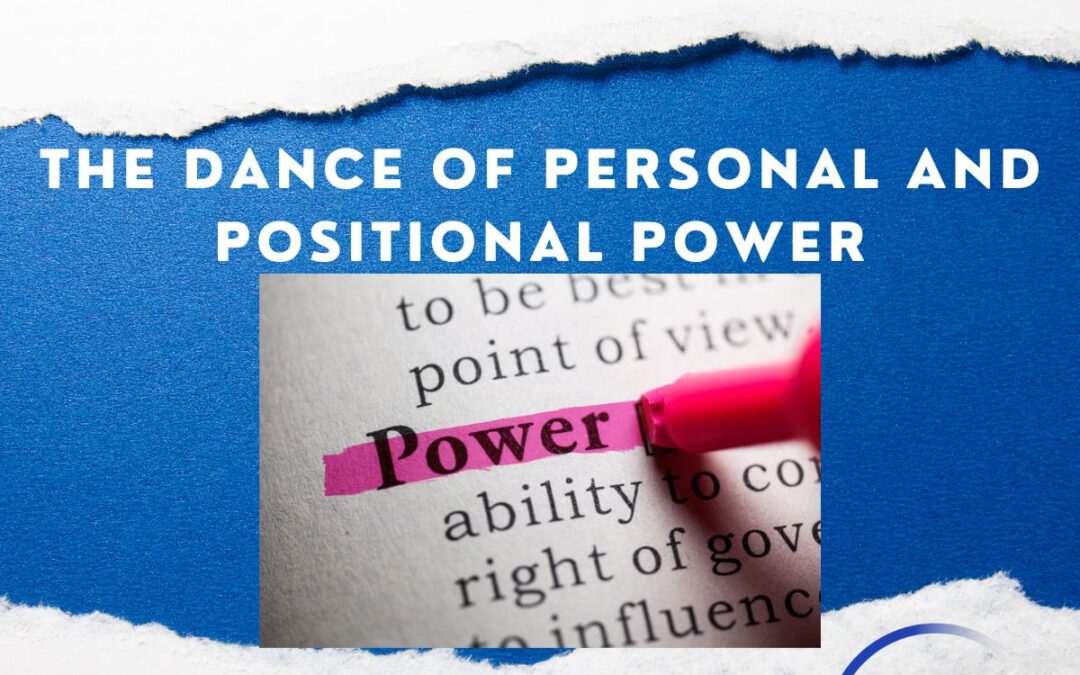Power struggles. They’re real! Whether in personal or workplace relationships, people are often in the middle of them without even knowing it.
Many of us navigate daily between two primary sources of influence: personal power and positional power. While personal power emanates from intrinsic qualities and interpersonal skills, positional power is derived from formal roles and titles within the organizational hierarchy. Understanding the interplay between these two forms of power is crucial for effective relationships, leadership, and influence, to help ensure a collaborative work or personal environment. Let’s get dive a bit deeper into both and how to step into mutual power without playing the power struggle game.
Harnessing Personal Power
Personal power is found within individuals, transcending formal authority and titles. It stems from qualities such as integrity, empathy, and authenticity, enabling individuals to inspire and influence others through their actions and demeanor. Building personal power requires intentional efforts to cultivate meaningful connections, demonstrate competence, and uphold values that resonate with colleagues and team members. By investing in personal growth and forming genuine relationships, individuals can amplify their influence and become trusted leaders within their organizations. How you approach conflict says a lot about how you step into your personal power. Do you tend to avoid confrontations, or are you raring to go, many times finding you must hold yourself back? There also happens to be a gender difference with personal power. Male communicators tend to talk about themselves and position themselves up in conversations, female communicators will tend less to talk about themselves, and ask more relational questions of the other person to give them more personal power. It is important to note that men can have the indicators of a female communicator and vice versa. Gender does not depict alignment with the type of communicator individuals are. The best indicator of how someone communicates and steps into their personal power is learned behaviors. Personally, I happen to have a male communication style of personal power.
Positional Power: Responsibilities and Challenges
Positional power, on the other hand, is given by organizational structures and formal roles. While it grants individuals the authority to make decisions and allocate resources, it also comes with responsibilities and challenges. Leaders must wield positional power judiciously, recognizing that authority alone does not guarantee respect or influence. People need to be careful that they are not being punitive with this type of power; when that happens others feel disempowered and will stop doing things for fear of rejection or failing to have a voice in problem solving. Effective leadership entails leveraging positional power to drive positive change and foster a culture of collaboration and accountability within teams and organizations. Research show that male and female communicator types are quite different when they are expressing their positional power. Male communicators tend to make directive statements with authority, female communicators will often ask and request. Similarly, male communicators tend to exaggerate their positional power with leading with titles, female communicators will often downplay their title, or where they fall on the hierarchy chart, focusing more on how they interact with their teams.
So how can you balance your personal power and/or positional power for optimal relationship outcomes, whether personal or at work?
Strategies for Maximizing Influence
Understanding the dynamics of personal and positional power is crucial for anyone looking to enhance their influence in relationships. Learning to set boundaries, saying ‘no’ is a big one, and stepping outside one’s comfort zone is one way to gain back personal power. If you are a leader with positional power, humility and authenticity lay the groundwork for building trust and credibility, which can further help expand your impact, as can embracing vulnerability and transparency.
Effective relationships, and ultimately good leadership hinge on the balance of personal and positional power. Both are needed for the biggest impact. While positional power may afford authority and influence within businesses structures, personal power serves as the foundation for building trust, fostering collaboration, and driving sustainable change. When combined, these two forms of power complement each other, enabling leaders to effectively navigate organizational dynamics, inspire others, and drive positive change. Personal power enhances the effectiveness of positional authority by fostering genuine connections, while positional power lends legitimacy and resources to support the execution of initiatives rooted in personal influence. In essence, leveraging both personal and positional power maximizes a leader’s ability to build strong relationships, foster collaboration, and achieve collective goals.
I want to hear from you. How do you view power? Do you have more personal or positional power? Find me on social media, DM me to continue this conversation and let me know.
#EmpoweredLeadership #StrategicInfluence #PowerDynamics #LeadershipInsights

